Equipment
Keegan proves he’s still a pro with a short putter

Spend enough time listening to golf’s traditionalists, and you might just start to believe what they have to say about long and belly putters.
“It’s cheating,” says the faction who rallied behind the USGA’s anchored putter ban, which will go into effect on January 1, 2016.
“It’s not in the true spirit of the game,” say the slightly less fervent traditionalists, which includes golfers who are OK with metalwood technology that allow them to never hit the sweet spot and still hit longer and straighter drives than their fathers.
“It just looks terrible,” says, well… everybody, because sticking the butt end of an oversized putter into your belly button or sternum does look pretty strange.
I’m not saying that these arguments aren’t valid, because for some golfers, anchored putting does make putting easier. As a golfer who used an anchored putter throughout my years as a college golfer, I don’t need any more proof than myself to understand that.
And yes, anchoring a golf club to your body does seem to take away from golf in its simplest form, a philosophy that’s come to be know as caveman golf — “hit it, find it and hit it again” — that loses its flow when golfers become concerned with finding the perfect anchor point.
Since the anchored putting ban went into effect, however, I’ve heard arguments from all sorts of people — traditionalists, non-traditionalists and even non-golfers — who say that players such as Keegan Bradley, Webb Simpson and Adam Scott will have “no chance” once their anchored putters are stripped from their midsections.
“They better win all they can before 2016, because after that it’s all done,” they say.
In yesterday’s first round at the Memorial Tournament, Bradley used a short putter for the first time on the PGA Tour since 2010 and he putted great. Bradley’s first-round 67 included five birdies and no bogeys. That’s right, he didn’t miss a single short one for par, and was the sixth-best putter on the course yesterday according to the PGA Tour’s Strokes Gained-Putting statistic.
To navigate Muirfield Village’s greens, Bradley used a 41-inch Odyssey White Hot XG Sabertooth putter with a 40-gram weight attached under its grip. It was basically the same setup as his belly putter except for its shorter length, which kept the putter from touching his midsection.
After the round, Bradley didn’t speak much about the technical changes and time he needed with the short putter as much as the stigma that he knew would be associated with the change. And what the 2011 PGA Championship winner did say about switching to a short putter was mostly positive.
“I have a lot more touch on the greens,” he said. “On a course like this or Augusta or any major championship that I play on, I felt like I’ve needed a little more touch than I’ve had. And so the positives of this putter are I can hit softer putts. My long lag putts are a ton easier.”
The biggest negative, Bradley said, was that he was “aware that people are watching me. And that’s the hardest part.”
Before we dismiss the skills of anchored putter users like Bradley, Simpson and Scott, golfers need to consider a few things:
- Anchored-putter users have more than a full season to learn a non-anchored style.
- They have the best tools, teachers and technology at their disposal to make the switch.
- They are usually top-tier ballstrikers on the PGA Tour, which means they can afford to putt poorly from time-to-time.
Of course, there are challenges associated with changing putting styles that can’t be solved by technology, such as the mental hurdles Bradley will face every time he feels unsure of himself over a short putt. Every time he misses one, even if it was caused by a misread or a spike mark, many fans and broadcasters will be quick to point out that he may have made that putt if he had his belly putter.
But Bradley, like most professional golfers, is willing to go to great lengths to create a training regime to help him with the pressure. He enlisted Michael Jordan, one of the most intimidating sports figures on the planet in his prime, to keep him mentally sharp.
“I played 36 holes a day with M.J. last week, and I told him I really wanted him to chirp at me, make me uncomfortable, which he’s good at,” Bradley said.
Bradley will have bad days going forward with whatever putter he decides to use, as will Scott and Simpson, but to relegate their putting skills to the depths of the PGA Tour because of their anchored putting styles is to not fully understand how truly gifted these players are.
Time will tell just how much of a difference the anchored putter ban will have on these players, but my bet is on it not having much of an effect at all. It will focus these great players on a specific task that they’ll want to perfect. Maybe most important in all this is that these players will have something to prove: they can putt great without anchoring, and that their major championship wins were a result of them being champions, not cheaters.
Extra motivation for talented millionaires who like nothing more in life than winning golf tournaments? I like those odds for success.
- LIKE0
- LEGIT0
- WOW0
- LOL0
- IDHT0
- FLOP0
- OB0
- SHANK0
Whats in the Bag
Kris Kim WITB 2024 (May)

- Kris Kim what’s in the bag accurate as of the CJ Cup Byron Nelson. More photos from the event here.
Driver: TaylorMade Qi10 (9 degrees @7)
Shaft: Mitsubishi Tensei 1K White 60 TX
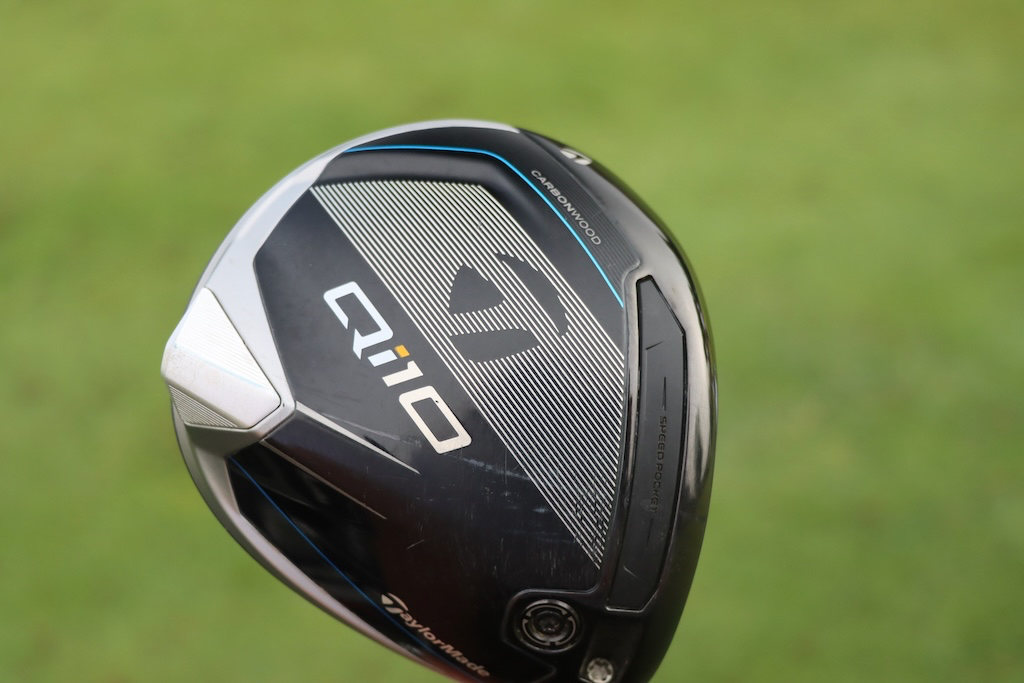

3-wood: TaylorMade Qi10 Tour (15 degrees @13.5)
Shaft: Mitsubishi Diamana WB 73 TX
Irons: TaylorMade P770 (2, 4), TaylorMade P7MB (5-PW)
Shafts: Mitsubishi Tensei 1K White 80 TX (2), Nippon N.S. Pro Modus3 Tour 120 X
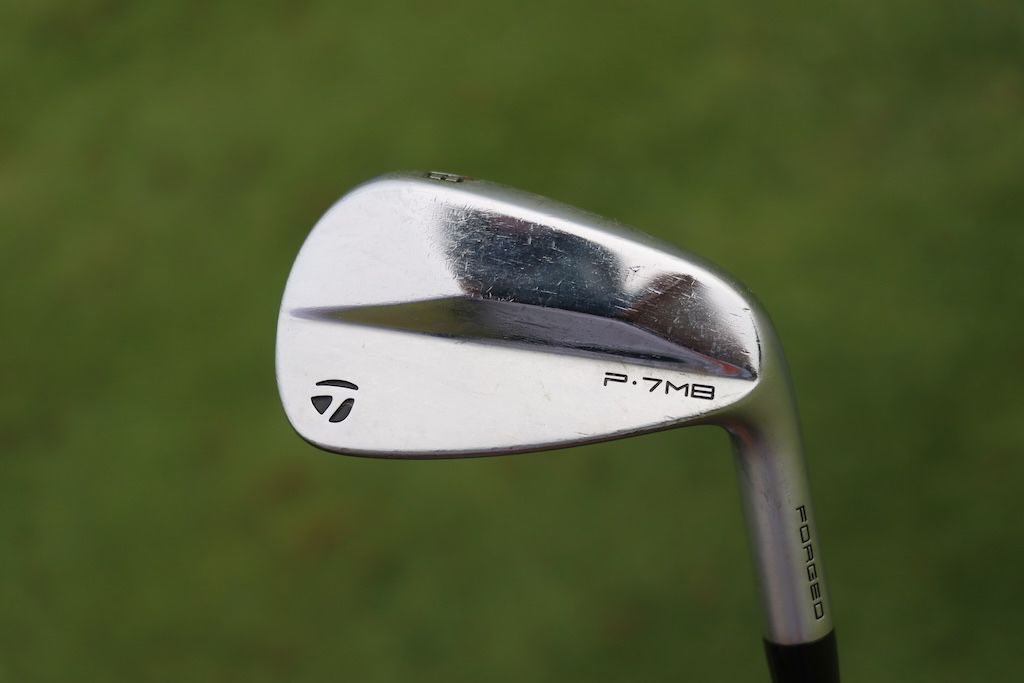

Wedges: TaylorMade MG4 (50-09SB, 56-12SB, 60-11TW)
Shafts: Nippon N.S. Pro Modus3 WV 125
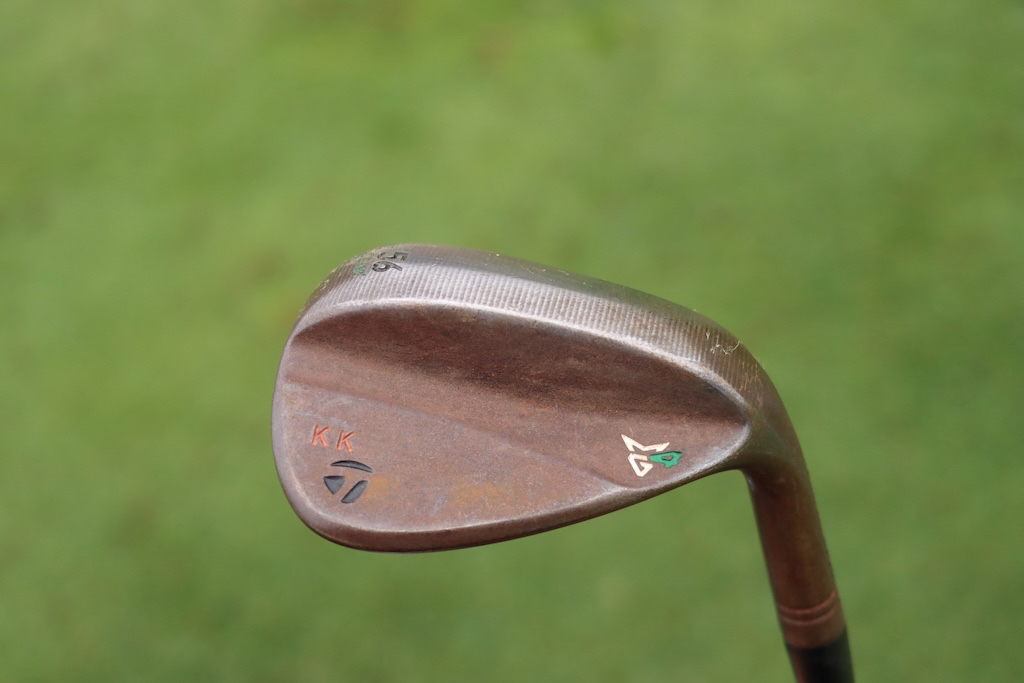

Putter: TaylorMade Spider Tour
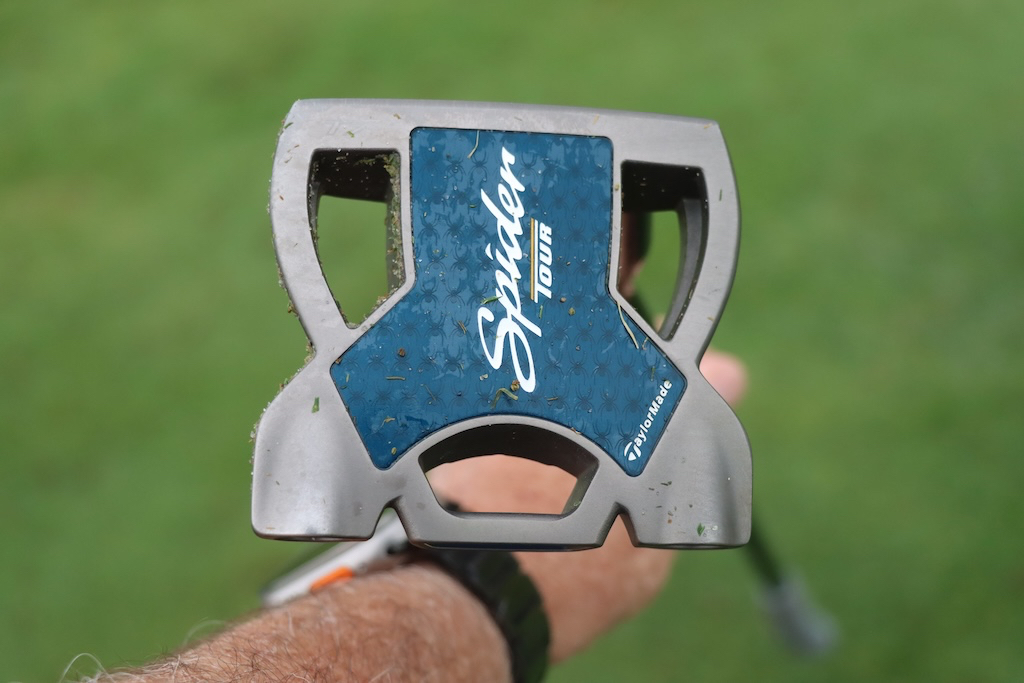
Grips: Golf Pride Tour Velvet Cord
Check out more in-hand photos of Kris Kim’s equipment here.
View this post on Instagram
- LIKE1
- LEGIT0
- WOW0
- LOL0
- IDHT0
- FLOP0
- OB0
- SHANK0
Equipment
Welcome to the family: TaylorMade launches PUDI and PDHY utility irons
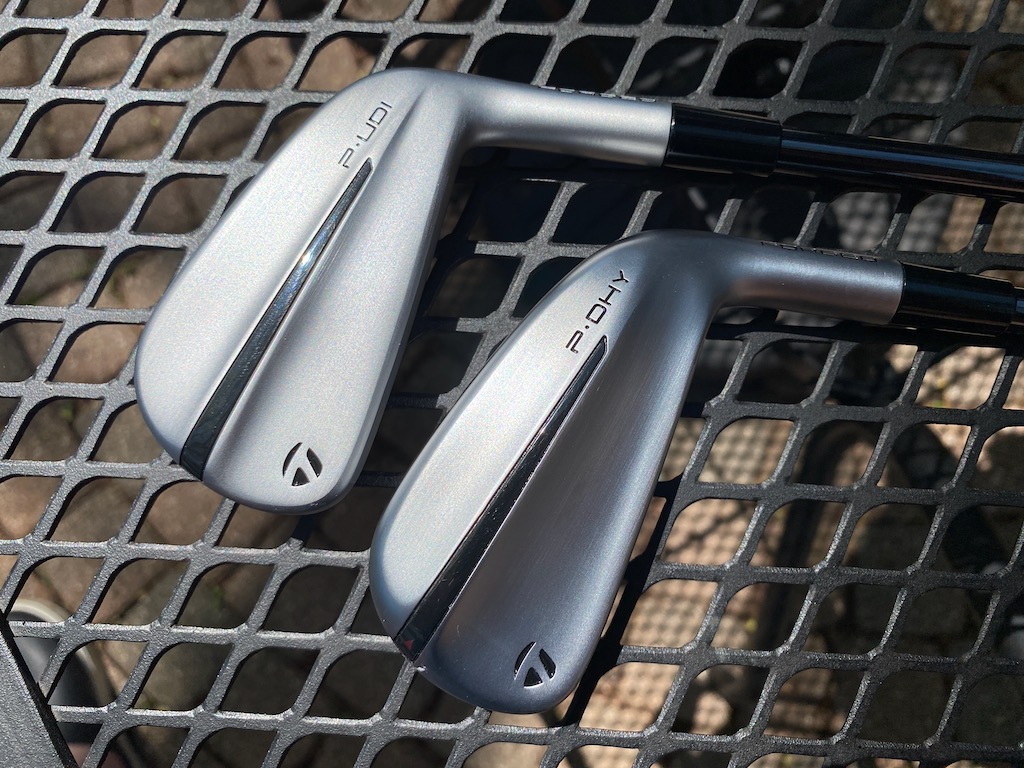
TaylorMade is continuing its UDI/DHY series with the successor to the Stealth UDI and DHY utility irons: PUDI and PDHY (which the company styles as P·UDI and P·DHY). TaylorMade is folding the designs in with its P Series of irons.
TaylorMade outlined the process of developing its new utilities this way. The company started with the data on utility iron usage. Not surprisingly, better players — i.e. those who generate more clubhead speed and strike the ball more precisely — were found to gravitate toward the UDI model. DHY usage, however, covered a wider swath than the company might have expected with six-to-18 handicappers found to be bagging the club.
TaylorMade also found that the majority of golfers playing UDI or DHY utilities were playing P Series irons at the top of their iron configurations.
Can you see where this is going?
Matt Bovee, Director of Product Creation, Iron and Wedge at TaylorMade: “As we look to the future, beyond the tech and the design language, we are excited about repositioning our utility irons into the P·Series family. P·UDI is an easy pair for players that currently play P·Series product and P·DHY is an extremely forgiving option for players of all skill levels. It is a natural fit to give these players the performance in this category that they are looking for.”
View this post on Instagram
TaylorMade PUDI
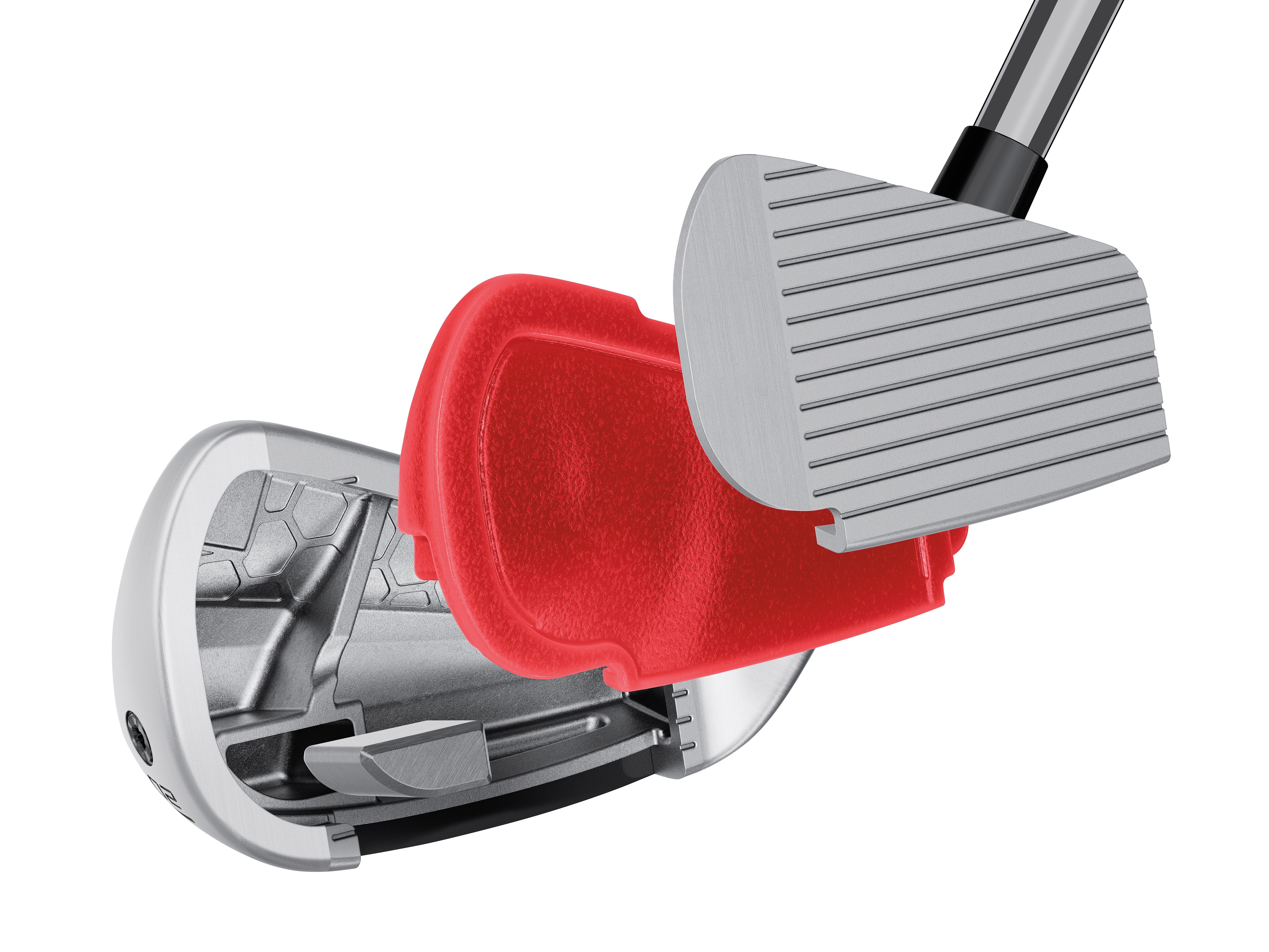
TaylorMade PUDI technology cutaway (via TaylorMade)
Crafted with tour player input, TaylorMade sought to develop a confidence-inspiring utility iron that blends with the rest of the P Series irons. Also of note: Interestingly, the PUDI has a more compact head than the P790.
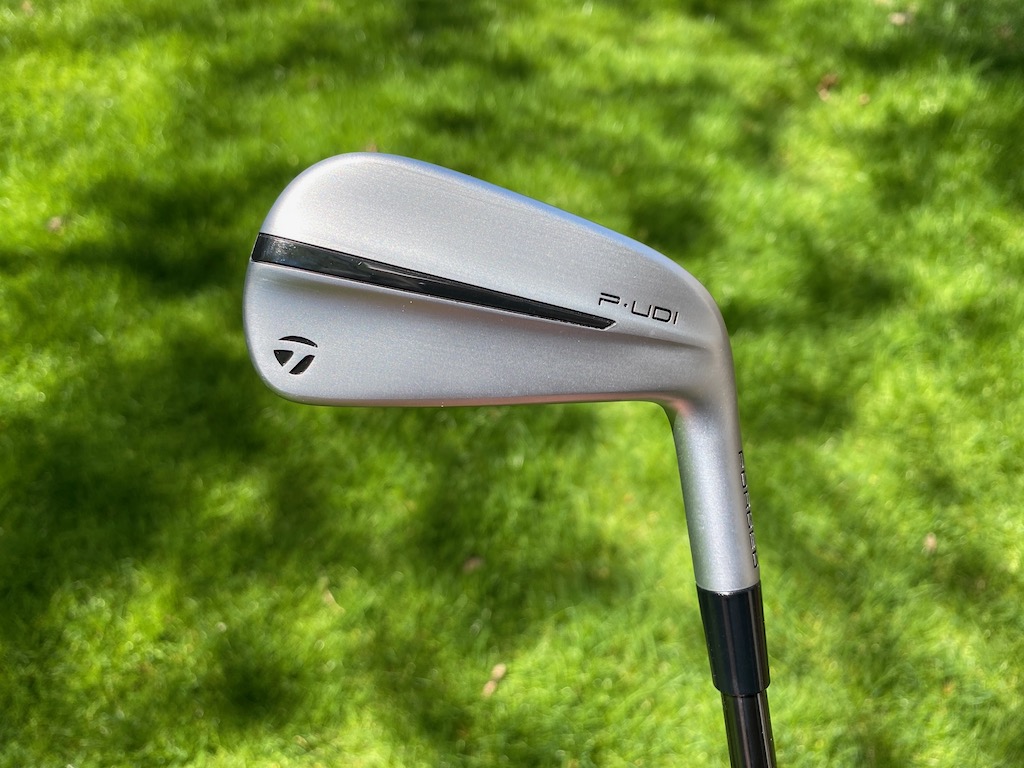
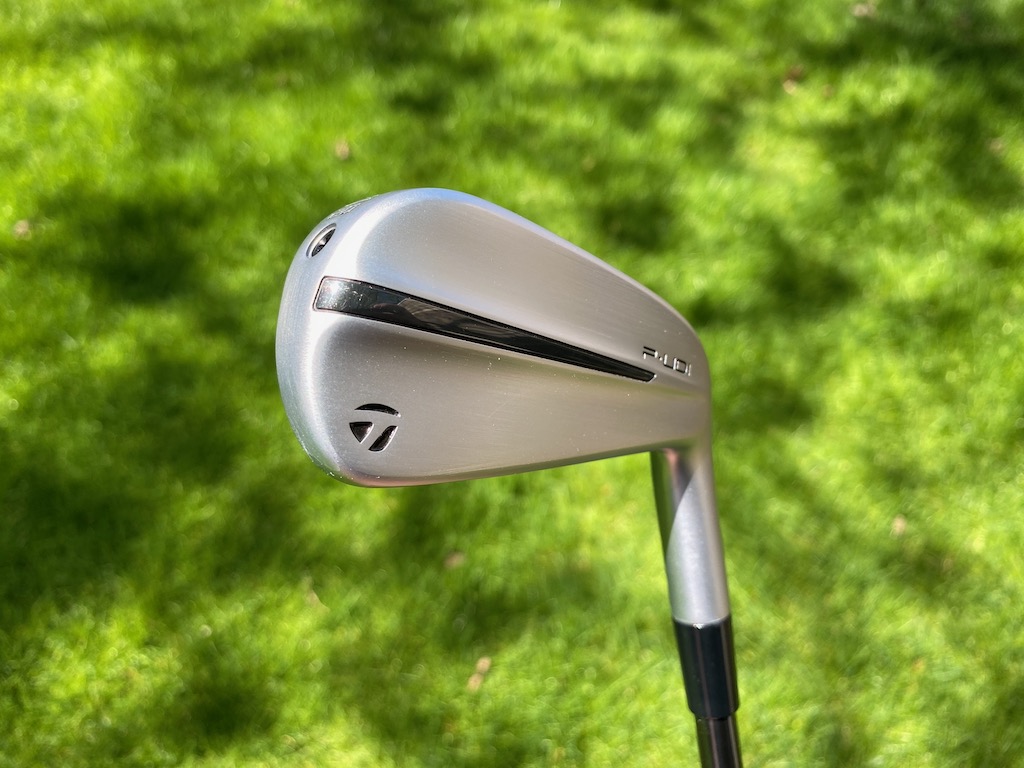
In comparison to past UDI products, the PUDI has a more traditional iron shape, slimmer toplines, and less offset with a little of the backbar visible at address.
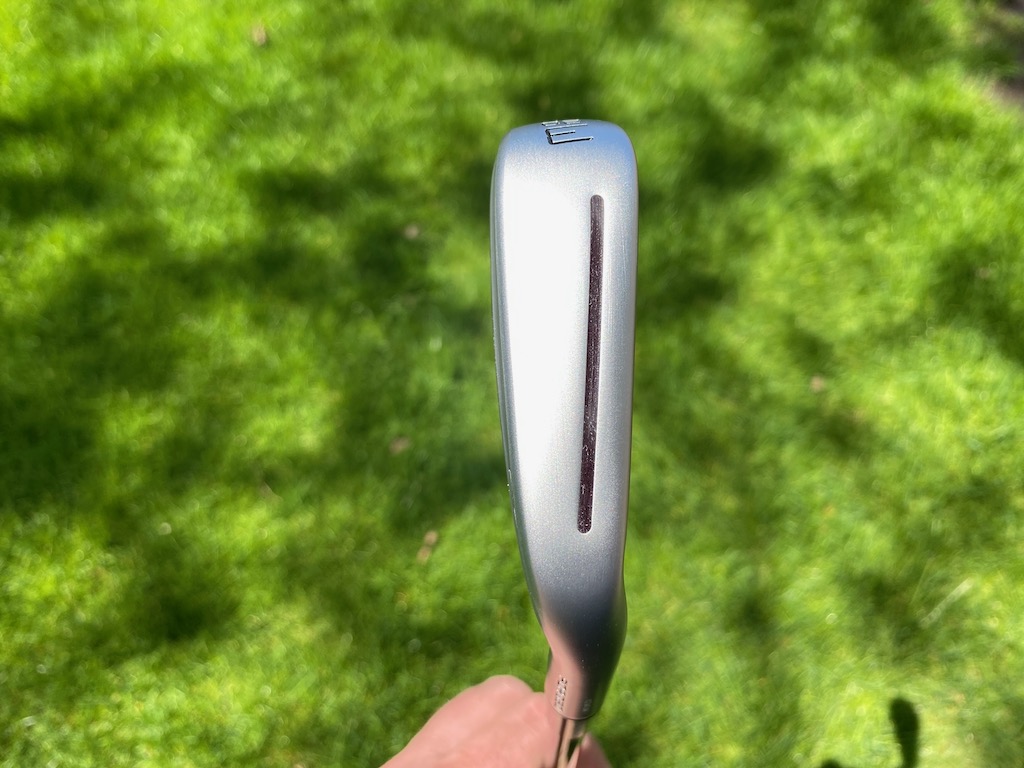

TaylorMade PDHY
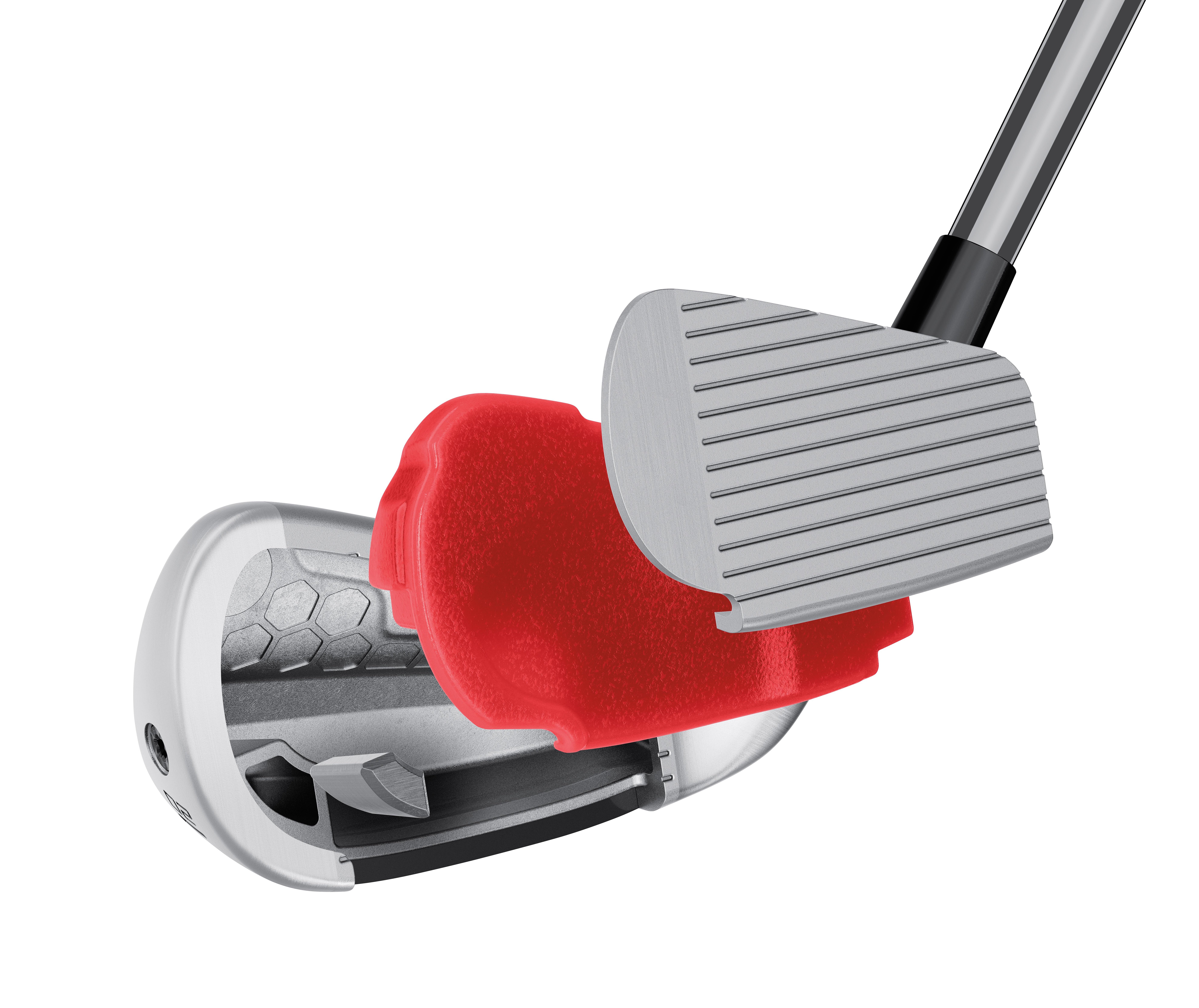
TaylorMade PDHY tech cutaway (via TaylorMade).
Larger in profile than the PUDI, the PDHY seeks to position center of gravity (CG) lower in the club for ease of launch. The toe height is larger and the profile is larger at address — roughly five millimeters longer than PUDI — the sole of the club is wider for improved forgiveness.
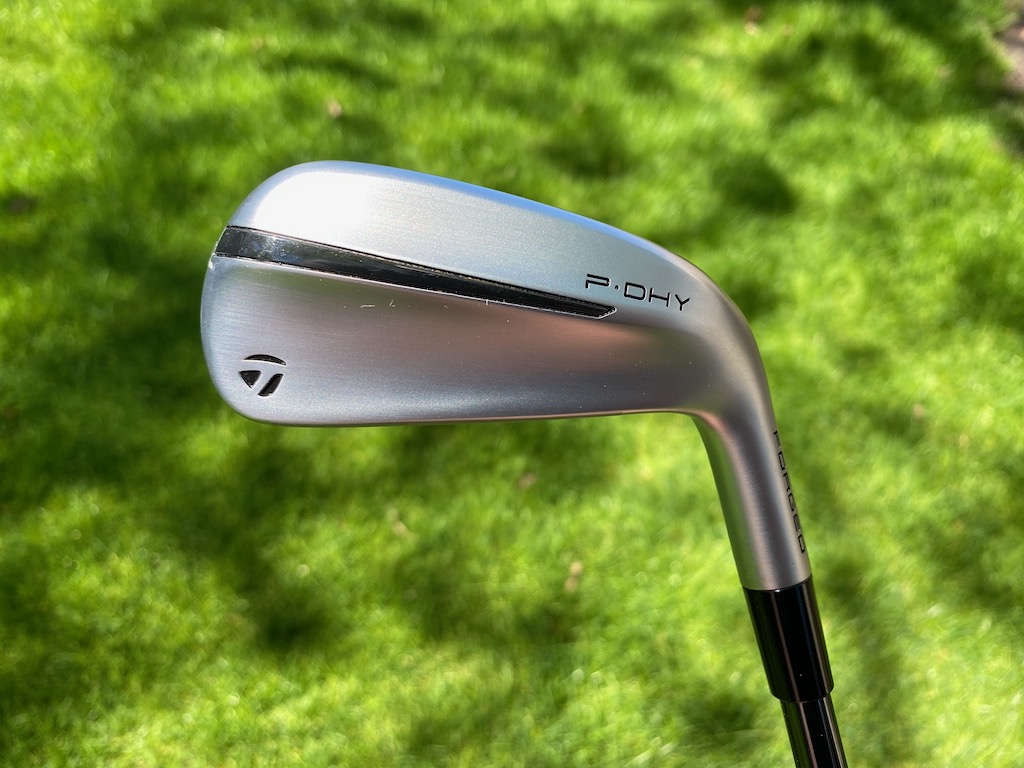



Club Junkie’s take
Golfers who feel like they are missing something at the top of the bag could find the PUDI or PDHY a great option. The look of the PUDI should fit the most discerning eye with a more compact look, less offset, and a thinner topline. If you want a little more confidence looking down the P-DHY will be slightly larger while still being a good-looking utility iron.
For being small packages both models pack a pretty good punch with fast ball speeds, even off-center. The feel is soft and you get a solid feel of the ball compressing off the face when you strike it well. Your ears are greeted with a nice heavy thud as the ball and club come together. The PDHY will launch a little higher for players who need it while the PUDI offers a more penetrating ball flight. Both utility irons could be the cure for an open spot in the top end of the bag.
PUDI, PDHY, or Rescue?
TaylorMade offers the following notes to assist golfers in filling out their bags:
- PUDI has mid-CG right behind the center face to create a more penetrating mid-to-low ball flight
- PDHY has a lower center of gravity to produce an easier-to-launch mid-to-high ball flight.
- Both PUDI and PDHY are lower-flying than the company’s hybrid/Rescue clubs.
- PUDI is more forgiving than P790.
- PDHY is the most forgiving iron in the entire TaylorMade iron family
Pricing, specs, and availability
Price: $249.99
At retail: Now
Stock shafts: UST Mamiya’s Recoil DART (105 X, 90 S and 75 R – only in PDHY)
Stock grip: Golf Pride’s ZGrip (black/grey)
PUDI lofts: 2-17°, 3-20°, 4-22° in both left and right-handed
PDHY lofts: 2-18°, 3-20° and 4-22° in both left and right-handed
- LIKE15
- LEGIT5
- WOW4
- LOL4
- IDHT1
- FLOP2
- OB3
- SHANK5
Equipment
Coolest thing for sale in the GolfWRX Classifieds (5/3/24): Scotty Cameron Champions Choice 2.5+ putter

At GolfWRX, we are a community of like-minded individuals that all experience and express our enjoyment of the game in many ways.
It’s that sense of community that drives day-to-day interactions in the forums on topics that range from best driver to what marker you use to mark your ball. It even allows us to share another thing we all love – buying and selling equipment.
Currently, in our GolfWRX buy/sell/trade (BST) forum, there is a listing for a Scotty Cameron Champions Choice 2.5+ putter
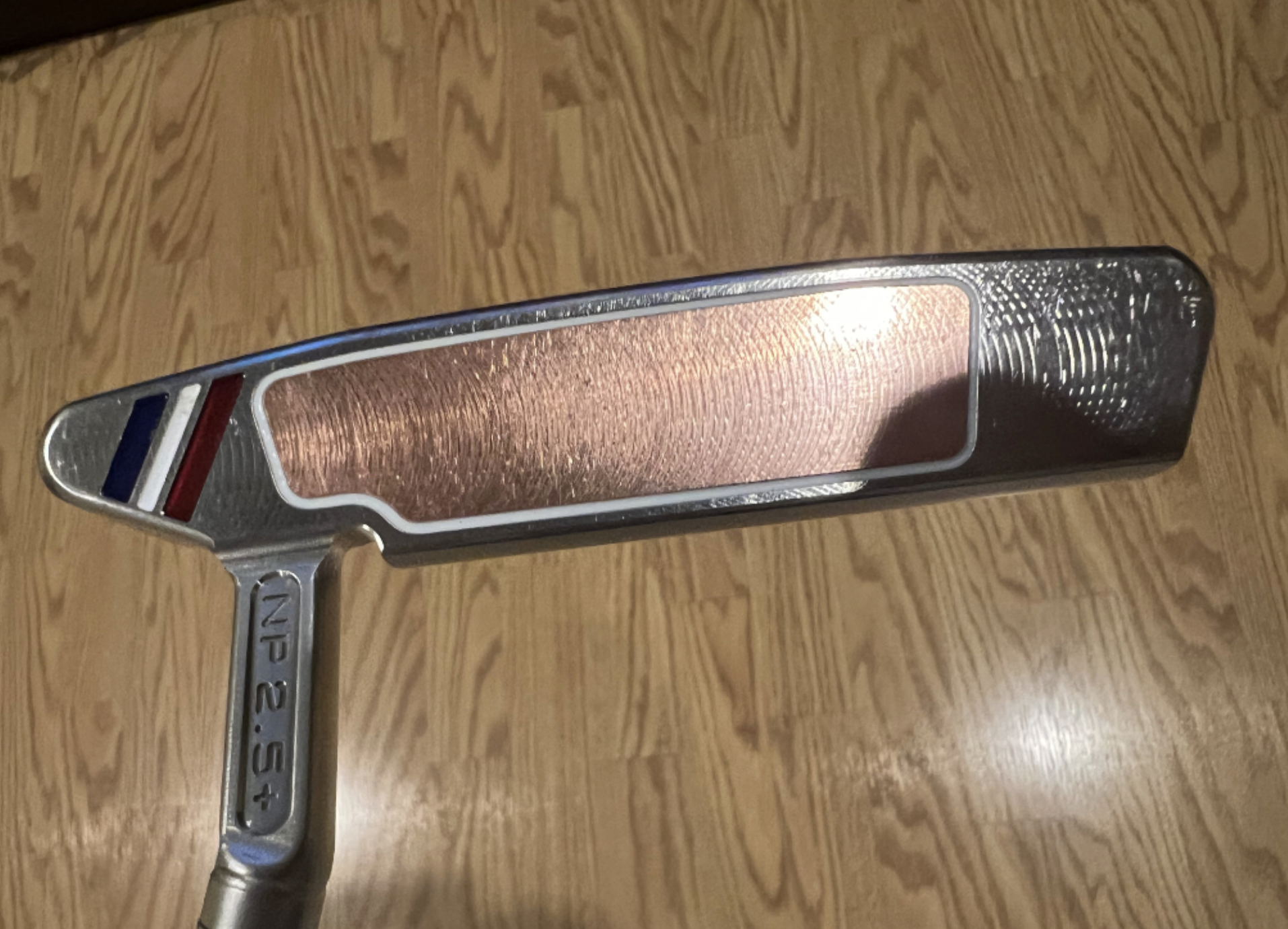
From the seller: (@wwcl): “Has been gamed as pics show. 33.5 includes original h/c and grip. $575 includes shipping and PP fees.”
To check out the full listing in our BST forum, head through the link: Scotty Cameron Champions Choice 2.5+ putter
This is the most impressive current listing from the GolfWRX BST, and if you are curious about the rules to participate in the BST Forum you can check them out here: GolfWRX BST Rules
- LIKE1
- LEGIT1
- WOW0
- LOL0
- IDHT0
- FLOP0
- OB0
- SHANK0
-

 19th Hole2 weeks ago
19th Hole2 weeks agoJustin Thomas on the equipment choice of Scottie Scheffler that he thinks is ‘weird’
-

 19th Hole2 weeks ago
19th Hole2 weeks ago‘Absolutely crazy’ – Major champ lays into Patrick Cantlay over his decision on final hole of RBC Heritage
-

 19th Hole3 weeks ago
19th Hole3 weeks agoTwo star names reportedly blanked Jon Rahm all week at the Masters
-

 19th Hole3 weeks ago
19th Hole3 weeks agoReport: LIV Golf identifies latest star name they hope to sign to breakaway tour
-

 19th Hole3 weeks ago
19th Hole3 weeks agoNeal Shipley presser ends in awkward fashion after reporter claims Tiger handed him note on 8th fairway
-

 19th Hole3 weeks ago
19th Hole3 weeks agoBrandel Chamblee has ‘no doubt’ who started the McIlroy/LIV rumor and why
-

 19th Hole1 week ago
19th Hole1 week agoLET pro gives detailed financial breakdown of first week on tour…and the net result may shock you
-

 Equipment3 weeks ago
Equipment3 weeks agoJason Day on his recent switch into Srixon ZX5 and ZX7 Mk II irons

















Kent
Jun 1, 2014 at 11:13 am
Not sure that Adam Scott has ever been irrelevant, but did struggle with putting consistently. Before making the switch in 2010, Scott was outside the top 50 OWGR, and 168th in strokes gained putting. Fast forward…Number one in the world, yet still not a great putter. He’s never broken the top 100 in strokes gained putting. So, sounds to me like he’s a below average putter anyways, and that won’t likely change. But, I’m curious to see how his confidence on the short ones is affected once he is forced to make the switch.
Hugh C. Manutz
May 31, 2014 at 4:10 pm
My spider sense tells me that this whole thing will go like the groove change which became a non-story in very short order.
Jimmy D
May 31, 2014 at 9:49 am
It’s a shame that the USGA and R&A implemented a controversial rule change simply because their respective Opens were finally won by players using a method that doesn’t look “right”. The absurdity of their decision making is evidenced by the fact that ALL long putters will still be 100% legal in 2016 – they just can’t be anchored. So moving the grip fractionally away from the body makes it look better? And Kuchar-style anchoring will still be allowed, since that doesn’t look that bad (and no major wins). Nice Job…Way to protect the game!
Derek
Jun 2, 2014 at 10:34 pm
You are obviously misinformed Jimmy D.
The ban came about by the USGA and R&A because it fundamentally CHANGED the putting stroke. As mentioned several times below our comments, ANCHORING the putter was the issue. Not how it looked… It never had ANYTHING to do with how it looked. Anchoring the putter is fundamentally different from a golf “swing” because it is anchored to the body and more easily and securely moved from one position to the next.
Never once did the USGA or R&A officially state that they banned it because it looked “silly.”
They banned it because it is not a golf swing. Period. Agree or disagree, you’re not a PGA Tour player so you can still use them as much as you like and thats what I think is most important. It only affects pros. If amateurs want to use it because it makes putting easier for them and makes Golf more enjoyable and keeps/brings more players to the game then by all means use them.
But for a pro to anchor the putter and fundamentally make a secure stroke easier than that’s fine. (remember, it doesn’t make them any better at reading putts or hitting them the right weight. It just makes it easier to start it on whatever line you happen to be aiming down.)
Nevin
May 31, 2014 at 9:13 am
Overall I think it is a good thing that pro’s and top amateurs can’t anchor the putter. It definitely stablized the stroke and made it a bit easier, especially under pressure. If you are an amateur who doesn’t play in the top tournaments, and anchoring makes the game more fun, there is nothing to stop from continuing to use these clubs,
Derek
Jun 2, 2014 at 10:31 pm
I agree whole heartedly with your comment.
Gaz
May 31, 2014 at 7:33 am
It is disappointing to think that this putting style needs outlawing after 30 plus years. No body cared until recent times! People have started having some success with this style of putting recently and as it is different, we need to abandon it? Why now and not before people met with some success? If it looks so bad and is not conventional then how did it get a leg up in the beginning….. Such a traditionalist sport we play……. But however we accept titanium 460cc drivers, shaft lengths at 46″ to match drivers that are almost impossible to use accurately. A slick coated hard/ durable golf ball that flies further and more straight than ever. Perimeter weighted irons……..who remembers persimmon blocks and blade irons? Hell we even played acushnet brass putters, zebra’s and a Ping anser putter was a luxury….. Get over yourselves, accept it and realise that golf is moving on….We play a difficult game and I believe as a PGA Golf Professional and coach of students for more than 20 years, we need to move with the times. Titanium drivers? Broomstick or belly putter, get over it.
It is ridiculous to suggest those who have won big tournaments in the past ( Adam Scott ) can not do so again in the future with a short flat stick should they need to…….I personally do not know why they should have to consider it!
Derek
May 30, 2014 at 8:10 pm
Hey just thought I’d throw in my 2 cents.
2 everyone that says that people who switched to longer putters are no better/worse are sadly mistaken.
Multiple players since switching to longe putters have won big tournaments (Majors) Bradley and Scott included. I’m not going to sit here and pretend that either player was irrelevant before switching because that’s completely false. However, I will sit here and tell you that their PUTTING has improved to a level that allowed them to win a Major tournament.
Will they get better or worse now that they have to go back? Who really knows. Maybe the confidence that the longer putters gave them will sustain them throughout their careers. Any real golfer knows that this game is 90% mental. So that argument is a moot point anyways.
My biggest concern with putting is that it fundamentally makes putting easier. Whether you suck at judging weight or read is a different matter. But it essentially makes a stable putting stroke easier. Moreover, NO OTHER CLUB is anchored to the body which technically removes the “swing” aspect out of golf. Which I also don’t agree with.
Love or hate, as stated in the article, pros will do what they can with the very best available to continue to be the best premier golfers on the planet. I am in full agreement with the ban on the PGA Tour but feel as though anything below Web.com and NCAA golfers should be allowed to use (Tourny or non-Tourny)
Just my (educated) 2 cents.
Thanks!
Bob
May 31, 2014 at 8:43 am
Robert Garrigus won after switching from long anchored putter to conventional length and style.
momo
May 30, 2014 at 4:21 pm
Don’t get me wrong, I love the guy. Love watching him play. BUT he was a miserable putter until 2011. He was always great from tee to green. He was really slumping prior to using the long putter.
TheLegend
May 30, 2014 at 2:20 pm
Well lets talk about what traditional golf really is. Since the beginning of golf we have tried to find better rocks to hit better sticks to hit the rock with and so on. The game has always been that way. That is one of the fun parts about this game. Now we are gonna tell people how they can play? This is very wrong. Its really not how golf was meant to be played. I guess im gonna go around now and tell people you cant hit cuts and you can only use this kinda ball and everyone has to play the same clubs. This rule only takes the magic out of the game. Theses people have NOOOOOOO evidence that an ancored putter helps.
Jim
May 30, 2014 at 10:35 pm
Actually the rules of golf already dictate how to play with some clubs. You arent allowed to putt using a croquet “between the legs” stroke either, and by extension you cant use a club specially created to support that stroke. I dont know when that rule came in, but my point is that refining those existing rules for another stroke / club is not new. So yes, I support flexibility and imagination and choice of compliant equipment, but I also acknowledge that the game has always had constraints on how far you could go with that.
Momo
May 30, 2014 at 12:08 pm
Im glad to see he made the change. Scott will have to do the same. I do beleive Scott will drop in the rankings once he shortens his putter. Scott was irrelevant before he started anchoring his putter.
Clemson Sucks
May 30, 2014 at 12:20 pm
He’s won a 1 major since anchoring his putter. He won a Player’s Championship with a shorter putter. Shouldn’t affect him that much.
thefullsp
May 30, 2014 at 12:56 pm
Saying Adam Scott was irrelevant before the long putter is a little harsh methinks.
MHendon
May 30, 2014 at 4:51 pm
Not only harsh but a little ignorant. Tells me he didn’t know much about the guy before he switched.
West
May 30, 2014 at 5:48 pm
Maybe a little harsh, but will be interesting to see how he is able to adjust…